I threw a picnic in our garden the other day. We were busy with all…
If you want to get ahead, get a hat!
The English love their hats. Perhaps nothing represents that better than a scene in the film, the Darkest Hour, when Clemmie says to Churchill: ‘Go. Be. Yourself!’ then Churchill responds: ‘Which self?’ and he turns to a wall on which are many hats hang – from a riding hat, to a Homburg, top hat, boater etc.
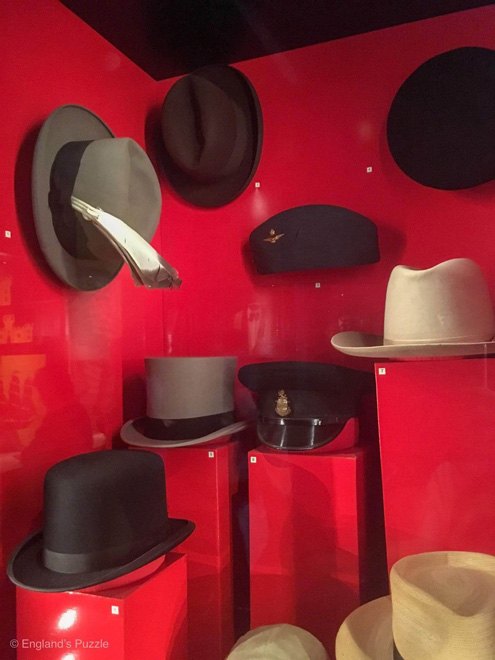
The English always wear hats no matter when and what the occasion is. Whether it is a festival, a wedding, a boat or horse race, hats are essential accessories. Some of the hats are so typically English, that they could not be anything else, other than English. Or could they? In this post I am going to introduce 10 hats worn in England.
The flat cap
Let’s start with the flat cap, purely because this simple and very common cap originated in medieval times. In 1571, during the reign of Queen Elizabeth I, the Parliament legislated to support the wool industry by boosting the consumption of wool. As a result, all men over the age of six had to wear some kind of woollen bonnet on Sundays and holidays. It had to be taken seriously – those who did not obey, were fined. The Tudor bonnet was so popular over the centuries, that it still remains part of academic dress today.
The Tudor bonnet was transformed at the beginning of the 20th century, which was made of wool or tweed and worn preliminary by men. Although the flat cap became the hat of the working class, interestingly the middle and high class too wore it, but for playing golf and other sports. The expression ‘a flat cap and a whippet’ refers to a Yorkshire man in English.
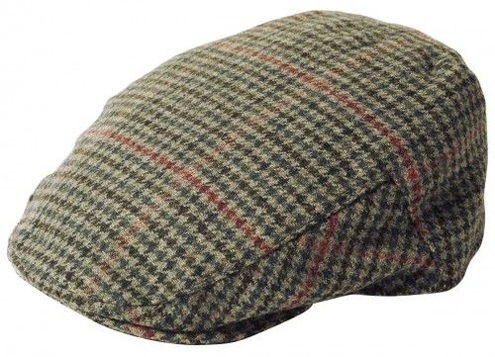
The Ascot cap
The Ascot cap is very similar to the flat cap. The difference is that it is hard and has a rounded shape. While flat caps are made of multicoloured wool or tweed often with a pattern, the Ascot is made of single coloured felt, with no pattern so that it matches the colour of the suit. The Ascot cap is not lined with a silk, whereas the flat cap is.

The newsboy cap
Another version of the flat cap, is the so called newsboy cap or baker cap and its most popular variant the eight–panelled cap with a button on the top. This is what you can see in ‘Peaky Blinders’ and also the guitarist of Guns ’n Roses, Izzy Stradlin preferred to wear besides headbands. Its name speaks for itself and the cap was associated with newspaper boys, however the cap was not worn by them only: steel workers, shipwrights, farmers and tradesmen also wore them. Although this cap was common among the lower classes, just like the flat cap, the newsboy cap was also worn by the elite mainly for golfing or driving.
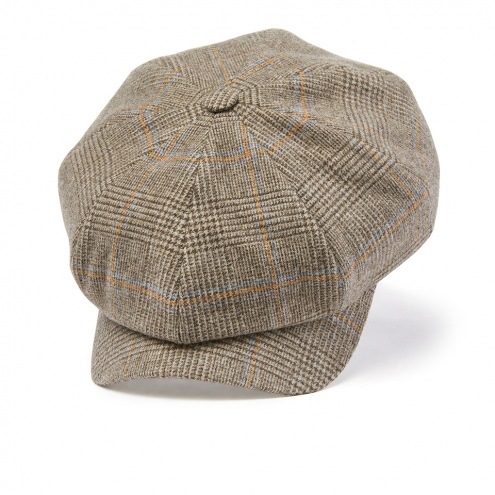
The Bowler hat
Perhaps the most iconic, or most English hat, is the Bowler hat, which has nothing to do with playing bowls. Charlie Chaplin and Winston Churchill are among those who were associated with the Bowler hat.
As for its history, the famous milliner Lock and Co that have been in the trade since 1676 subcontracted an order to Thomas & William Bowler. Edward Coke, the 2nd Earl of Leicester ordered a hat that would protect the heads of his gamekeepers from low hanging branches as their top hats kept getting knocked off. Coke collected the hat in London on 17th December 1849, he unwrapped it, put it on the floor and stamped on it twice. He left satisfied. (Oops, another English eccentric…?) 🙂
The hat became a semi-formal wear and in the 1920s bankers of the City of London all wore Bowler hats. Later it was also worn by the working class – footmen, butlers (Mr Stokes, Mr Twelvetrees!), railway workers etc and it was also popular on racecourses.
Interesting fact: In America the same hat is called a derby hat.
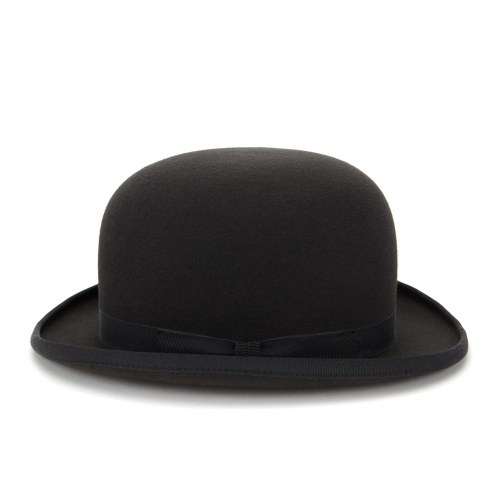
The boater
I would refrain from saying the boater is an English invention as it was widely worn in many European countries and in America as well. What is for sure that the boater is an essential accessories of the English summer, especially at boat races worn with elegant suits. Mr Teddy in ‘You Rang, M’Lord?’ also wore a boater as well as Anne Shirley in Anne of Green Gables. Coco Chanel was a big fan of the boater hat and happily made them fashionable at the beginning of the 20th century.

The pork pie hat
The pork pie hat got its name from the pie as it looked like a pork pie. It also existed in a straw version. The difference between a boater and a pork pie hat is that it has a much narrower rim and it is curled. Pork pie hats were worn by women between 1830 and 1865 in Great-Britain and America. It became popular among men in the 1920s when Buster Keaton famously wore one.
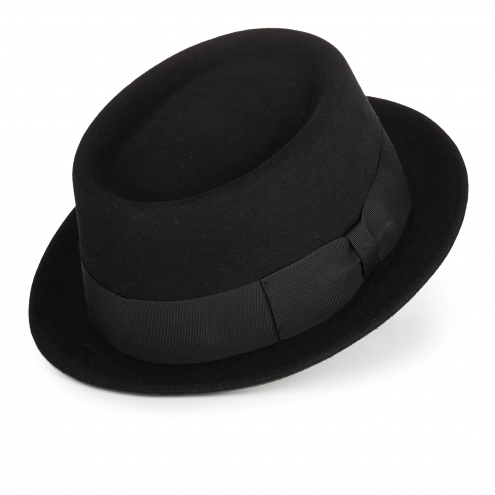
The Trilby
The Trilby hat was inspired by a hat worn on stage when ‘The Trilby’ by George du Maurier performed. The Trilby resembles the Tyrolean hat: it has a shorter brim which is angled down at the front and slightly turned up at the back and has a short crown. The hat became popular in the 1890s and was considered to be the hat of the rich, however, later it was also worn at horse races.

The Top hat
The top hat is the most elegant to wear of all. It is completely hard, tall and has a cylinder form. Some believe it comes directly from the sugarloaf hats (worn like Guy Fawkes) of the 16th century, but it is more likely that a French dandy wore the first hat looking like a top hat. Beau Brummel made it fashionable in England and it was worn by the gentlemen of the late 18th century and beginning of the 19th century.
Top hats were made of beaver fur and changed to hatter’s plush. The collapsible top hat was a French invention in 1834. In the middle of the 19th century, top hats became the symbol of urban respectability when they were worn not only as a formal wear but as a semi-formal wear of industrialist, merchants, businessmen and engineers like Isambard Kingdom Brunel. However, when worn as a formal wear, the top hat had to be and has to be black. At semi-formal events like horse races, a grey top hat was allowed. They to are also worn at society weddings where all male guests wear morning suits.
The top hat with straight sides was called a stovepipe hat (worn by American president, Abraham Lincoln), the one with slightly convex sides was called chimney pot hat.

The Homburg
The Homburg hat was a semi-formal hat at the end of the 19th century. The Prince of Wales, the future King Edward VII liked it and brought it to Britain from Bad Homburg, Germany, where it was used as a hunting hat. The brim of the hat is curled, has a single dent running down the centre of the crown and is decorated with a ribbon-bound trim about the edge of the brim.

The Deerstalker
Last but not least the famous hat that is associated with Sherlock Holmes: the deerstalker. The hat with the flop down ears has nothing to do with Sherlock Holmes by the way, as Sir Arthur Conan Doyle has never described Holmes wearing one. One of the reasons is that deerstalkers were only worn in the countryside during hunting, shooting and other sporting events. This type of hat simply did not suit the elegant city and clothing. Why did Sherlock ended up with one then?
Well, the illustrator of the Sherlock Holmes book, Sidney Paget loved the deerstalker and wore them with pleasure. Another theory suggests that adding a deerstalker to Holmes simply emphasised Holmes’s eccentric character.
The brim in the front protects the forehead, the one in the back protects the neck from the sun and the flop down ears obviously keeps your ear warm.
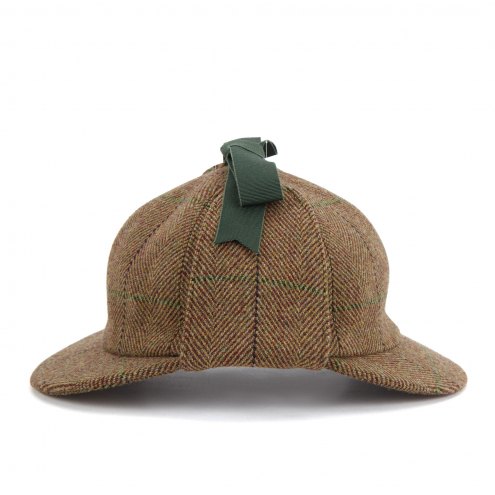
~
I must admit, I had never been a hat person, but since I have been living in England, I bought a few. 🙂 First just for fun and perhaps to fit in, but I soon realised, it is also practical to wear hats. My favourite is the boater.
Do you have a favourite type?




Good little story about hats.
Thank you, Lee. I’m glad you liked it.